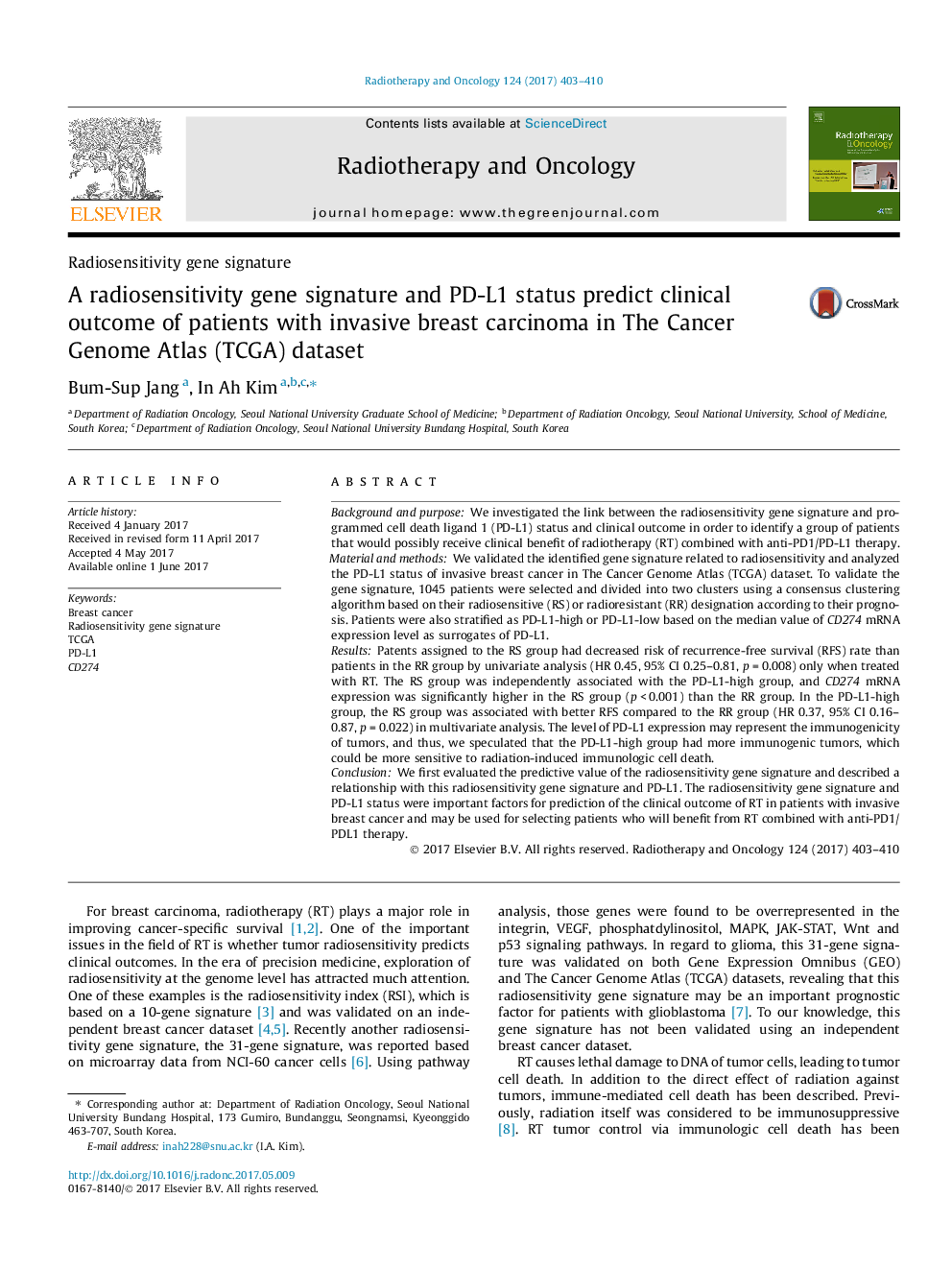| کد مقاله | کد نشریه | سال انتشار | مقاله انگلیسی | نسخه تمام متن |
|---|---|---|---|---|
| 5529434 | 1548894 | 2017 | 8 صفحه PDF | دانلود رایگان |

Background and purposeWe investigated the link between the radiosensitivity gene signature and programmed cell death ligand 1 (PD-L1) status and clinical outcome in order to identify a group of patients that would possibly receive clinical benefit of radiotherapy (RT) combined with anti-PD1/PD-L1 therapy.Material and methodsWe validated the identified gene signature related to radiosensitivity and analyzed the PD-L1 status of invasive breast cancer in The Cancer Genome Atlas (TCGA) dataset. To validate the gene signature, 1045 patients were selected and divided into two clusters using a consensus clustering algorithm based on their radiosensitive (RS) or radioresistant (RR) designation according to their prognosis. Patients were also stratified as PD-L1-high or PD-L1-low based on the median value of CD274 mRNA expression level as surrogates of PD-L1.ResultsPatents assigned to the RS group had decreased risk of recurrence-free survival (RFS) rate than patients in the RR group by univariate analysis (HR 0.45, 95% CI 0.25-0.81, p = 0.008) only when treated with RT. The RS group was independently associated with the PD-L1-high group, and CD274 mRNA expression was significantly higher in the RS group (p < 0.001) than the RR group. In the PD-L1-high group, the RS group was associated with better RFS compared to the RR group (HR 0.37, 95% CI 0.16-0.87, p = 0.022) in multivariate analysis. The level of PD-L1 expression may represent the immunogenicity of tumors, and thus, we speculated that the PD-L1-high group had more immunogenic tumors, which could be more sensitive to radiation-induced immunologic cell death.ConclusionWe first evaluated the predictive value of the radiosensitivity gene signature and described a relationship with this radiosensitivity gene signature and PD-L1. The radiosensitivity gene signature and PD-L1 status were important factors for prediction of the clinical outcome of RT in patients with invasive breast cancer and may be used for selecting patients who will benefit from RT combined with anti-PD1/PDL1 therapy.
Journal: Radiotherapy and Oncology - Volume 124, Issue 3, September 2017, Pages 403-410